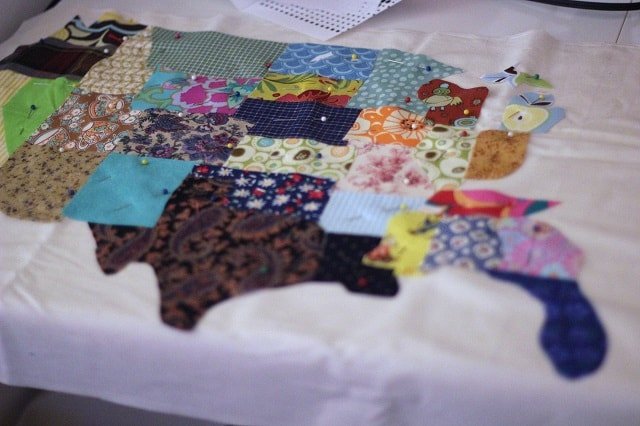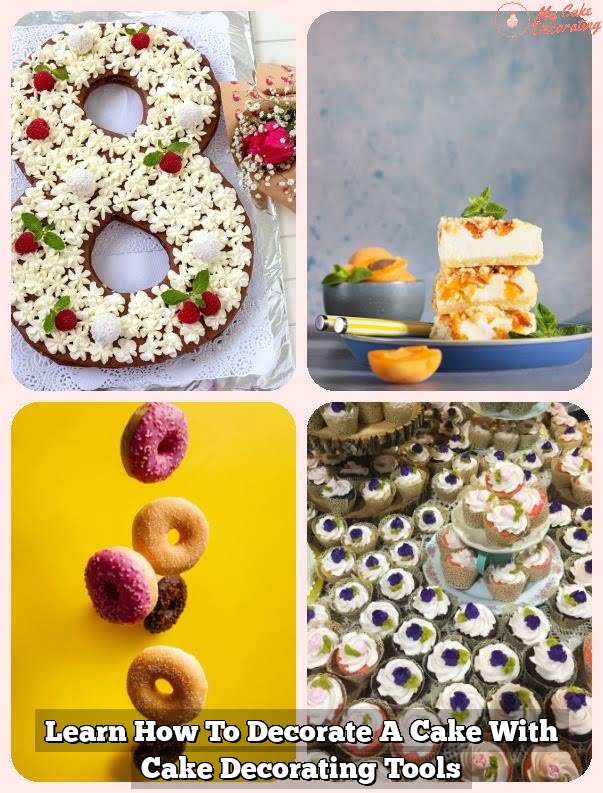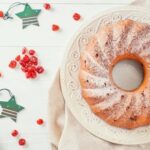Are you wondering how to decorate a quilt cake for your next celebration? Quilt cakes have gained popularity in the baking world for their unique and intricate design that resembles a traditional quilt pattern. These cakes are a perfect choice for various occasions, from birthdays to weddings, adding a touch of elegance and creativity to any event.
A quilt cake typically features fondant or buttercream designs that mimic the look of fabric squares stitched together. To create this stunning effect, bakers use a combination of tools such as quilting rulers, embossing mats, and piping bags. The result is a visually appealing cake that showcases the artistry and skill of the decorator.
With the right tools and supplies at your disposal, decorating a quilt cake can be a fun and rewarding experience. In the following sections, we will guide you through everything you need to know about creating a beautiful quilt cake, from selecting the perfect cake base to choosing an eye-catching color scheme and adding embellishments for that extra wow factor. Let’s dive into the world of quilt cake decoration and unleash your inner baker.
Basic Tools and Supplies Needed
A quilt cake is a popular choice for celebrations due to its intricate and visually stunning design that resembles a patchwork quilt. To create a beautiful quilt cake, you will need a variety of basic tools and supplies. One essential item is fondant, a versatile sugar paste that can be rolled out and shaped to create the quilted pattern. Fondant not only provides a smooth surface for decorating but also allows for intricate detailing.
In addition to fondant, you will also need quilting tools such as a quilting ruler, stitching tool, and embosser to create the stitching effect on your quilt cake. These tools help in achieving precise lines and patterns that mimic the look of an actual quilt. It’s important to have a sharp knife or pizza cutter on hand for cutting the fondant into strips or squares to construct the quilt design.
Furthermore, having a non-stick rolling pin, smoothing tool, and edible glue will greatly assist in working with fondant and adhering decorative elements to your quilt cake. These basic supplies are essential for bringing your quilt cake vision to life and creating a stunning dessert centerpiece for any occasion.
| Tools Needed | Supplies Needed |
|---|---|
| Fondant | Quilting ruler |
| Sharp knife or pizza cutter | Non-stick rolling pin |
Choosing the Right Cake
When it comes to decorating a quilt cake, choosing the right cake base is crucial to achieving a successful and visually appealing design. The type of cake you select can impact the overall look and structure of your quilt pattern.
For a quilt cake that will hold up well to decorating techniques like fondant covering and quilting, a sturdy and dense cake such as a butter cake or pound cake is recommended. These types of cakes provide a firm foundation for intricate designs and decorations.
Additionally, consider the flavor of the cake when selecting the right base for your quilt design. While vanilla or chocolate are classic choices that work well with most color schemes, you can also experiment with other flavors like lemon, red velvet, or carrot cake to add a unique twist to your creation.
Keep in mind that certain flavors may pair better with specific filling and frosting options, so be sure to consider the overall taste experience you want to create when choosing your cake base.
It’s also important to take into account any dietary restrictions or preferences when selecting your cake base. Whether you need to accommodate gluten-free, dairy-free, or vegan requirements, there are plenty of alternative recipes available that can be adapted to create a delicious quilt cake for everyone to enjoy.
By carefully considering both the structural integrity and flavor profile of your cake base, you can set yourself up for success as you embark on decorating your quilt cake masterpiece.
| Cake Base Type | Recommended Flavors |
|---|---|
| Butter Cake | Vanilla, Chocolate |
| Pound Cake | Lemon, Almond |
| Red Velvet Cake | Cream Cheese Frosting |
Creating the Quilt Pattern
Creating a quilt pattern on a cake can seem like a daunting task, but with the right techniques and tools, it can be a fun and rewarding experience. In this section, I will provide you with a step-by-step guide on how to create a beautiful quilt pattern on your cake that will impress your guests.
Gather Your Supplies
Before you begin decorating your quilt cake, make sure you have all the necessary tools and supplies. You will need fondant in various colors, quilting tools such as stitching wheel or embosser, and a ruler for precise measurements. Additionally, having a sharp knife for cutting fondant and a rolling pin for rolling out the fondant smoothly will make the process easier.
Divide Your Cake Into Sections
Start by dividing your cake into even sections to create the base of your quilt pattern. You can use a ruler to mark straight lines on the cake or gently indent the fondant with quilting tools to form the grid. Make sure your sections are equal in size to maintain symmetry in your design.
Creating the Quilted Effect
Once you have divided your cake into sections, use quilting tools to create stitching lines on the fondant. You can alternate between horizontal and vertical lines to mimic the look of a quilt. To add depth and dimension to your design, lightly press down on the fondant along the stitched lines using a ball tool or your finger. This will give your quilt pattern a realistic texture that will truly stand out on your cake.
By following these steps and using your creativity, you can easily create a stunning quilt pattern on your cake that wows both visually and taste-wise. Experiment with different colors, patterns, and embellishments to make your quilt cake truly unique and personalized for any special occasion.
Color Scheme and Design Ideas
Quilt cakes are a fun and creative way to add a touch of charm and elegance to any celebration. The quilted pattern gives the cake a cozy and inviting feel, making it a popular choice for various occasions such as birthdays, baby showers, or even weddings. If you’re looking to learn how to decorate a quilt cake, we’ve got you covered with some helpful tips and ideas.
When it comes to decorating a quilt cake, selecting the right color scheme and design is crucial in achieving a cohesive look. Here are some inspiration for choosing colors and designs that complement the quilt theme:
- Consider using pastel shades for a soft and delicate feel, perfect for baby showers or spring-themed events.
- Opt for bold and bright colors for a more vibrant and playful look, ideal for birthday parties or festive celebrations.
- Try mixing different patterns such as polka dots, stripes, or floral prints to add visual interest and texture to your quilted design.
In addition to color choices, the design of your quilt cake can also play a significant role in the overall aesthetic. Whether you prefer a traditional square patchwork pattern or a modern geometric design, there are endless possibilities to explore. Get creative with different shapes, sizes, and arrangements to create a unique and eye-catching quilted effect on your cake.
Don’t be afraid to experiment with different color combinations and design elements until you find the perfect balance that reflects your personal style or fits the theme of the occasion. Remember that decorating a quilt cake is all about having fun and getting creative – so let your imagination run wild as you bring your vision to life.
Embellishments and Details
When it comes to decorating a quilt cake, adding embellishments and details can truly elevate the overall design and create a stunning finished product. By incorporating elements like buttons, ribbons, and other decorative pieces, you can enhance the quilted effect and make your creation stand out. Here are some ideas on how to add those extra touches to your quilt cake:
- Buttons: Edible or non-edible buttons can be strategically placed on the intersecting points of the quilt pattern to mimic the look of a real quilt. You can use fondant or gum paste to create small buttons in various colors and sizes, or opt for store-bought edible decorations for convenience.
- Ribbons: To add a touch of elegance to your quilt cake, consider using thin strips of fondant or edible ribbon around the edges of each “quilt square.” These ribbons can be textured with quilting tools for added detail, or painted with edible luster dust for a metallic finish.
- Other Decorative Elements: Think outside the box and experiment with different embellishments to enhance the overall design of your quilt cake. You can use edible pearls, sugar flowers, or even hand-painted designs to bring a unique touch to your creation.
By carefully selecting and placing these embellishments and details on your quilt cake, you can create a visually appealing masterpiece that will impress your guests at any celebration. The key is to strike a balance between simplicity and complexity, ensuring that the decorative elements complement the quilted pattern without overwhelming it. With a steady hand and some creativity, you can transform a basic cake into a work of art that will be remembered by all who see it.
Tips for Achieving a Clean Finish
Quilt cakes are a wonderful way to add a touch of elegance and creativity to any celebration. The intricate quilted patterns on these cakes make them stand out as unique and visually appealing desserts. However, achieving a clean finish when decorating a quilt cake can sometimes be challenging. By following the right techniques and tips, you can create a flawless quilted design that will impress your guests.
Preparing the Fondant
One of the key elements in creating a clean finish on your quilt cake is properly preparing the fondant. Make sure to knead the fondant well until it is smooth and pliable. Roll out the fondant evenly using a rolling pin and ensure it is large enough to cover the entire cake without tearing or cracking. Dusting your work surface with powdered sugar or cornstarch can help prevent sticking.
Smoothing Out Imperfections
After covering your cake with fondant, use a fondant smoother to gently press and smooth out any wrinkles or air bubbles. Work from the center of the cake towards the edges, being careful not to tear the fondant. If you encounter any imperfections, use a small piece of fondant or a modeling tool to carefully patch or blend them in.
Creating Clean Lines
To achieve clean and precise lines on your quilt cake, invest in quilting tools like stitching wheels or rulers with different measurements. These tools can help you create straight lines and even spacing for your quilt pattern. Take your time when scoring the fondant to create realistic-looking quilting stitches on your cake. With patience and attention to detail, you can achieve a professional-looking finish on your quilted masterpiece.
By following these techniques for smoothing out fondant and ensuring clean lines on your quilt cake, you can elevate your decorating skills and create a beautiful dessert that will be the centerpiece of any celebration. Remember that practice makes perfect, so don’t be afraid to experiment with different designs and colors to find what works best for you. Enjoy the creative process of decorating your quilt cake and let your imagination run wild.
Troubleshooting Common Issues
Decorating a quilt cake can be a fun and rewarding experience, but it also comes with its own set of challenges. From smoothing out fondant to ensuring clean lines on your design, there are common issues that may arise during the decorating process. However, with a little know-how and patience, you can easily troubleshoot these problems and create a stunning quilt cake that will impress your guests.
One common issue that decorators face when creating a quilt cake is air bubbles forming under the fondant. To prevent this problem, make sure to knead your fondant thoroughly before rolling it out. Additionally, gently smooth out the fondant as you place it over the cake to eliminate any trapped air. If air bubbles do appear, use a small pin to prick them and gently press the fondant back down to smooth it out.
Another challenge that may arise is achieving sharp, clean lines on your quilt pattern. To ensure crisp edges, use a ruler or straight edge tool to guide your cuts when creating the pattern on the fondant. You can also lightly score the lines before cutting for added precision.
If any jagged edges do occur, gently smooth them out with a small brush or tool. With attention to detail and practice, you can master the art of creating flawless quilt patterns on your cakes.
In conclusion, decorating a quilt cake requires skill and creativity but don’t be discouraged by common issues that may come up during the process. By familiarizing yourself with troubleshooting techniques and practicing different decorating methods, you’ll be able to overcome challenges and create beautiful quilted designs that are sure to be a hit at any celebration.
So grab your tools and supplies, choose the perfect cake base, and let your imagination run wild as you learn how to decorate a quilt cake like a pro.
Frequently Asked Questions
How Do You Quilt a Cake With a Ruler?
Quilting a cake with a ruler involves using a ruler to create even, precise lines or patterns on the surface of the cake. The ruler helps to ensure that the design is straight and uniform throughout.
What Is the Quilt Effect on Wedding Cake?
The quilt effect on a wedding cake refers to a specific decorating technique where the surface of the cake is adorned with a quilted pattern. This effect adds elegance and texture to the overall look of the cake, making it a popular choice for weddings.
What Is a Quilt Layer Cake?
A quilt layer cake is typically a type of dessert that consists of multiple layers stacked on top of each other, resembling a quilt pattern. These cakes often have different flavors or fillings in each layer, creating a visually appealing and delicious treat for any occasion.

Welcome to my blog about home and family. This blog is a place where I will share my thoughts, ideas, and experiences related to these important topics. I am a stay-at-home mom with two young children. I hope you enjoy reading it! and may find some helpful tips and ideas that will make your home and family life even better!





